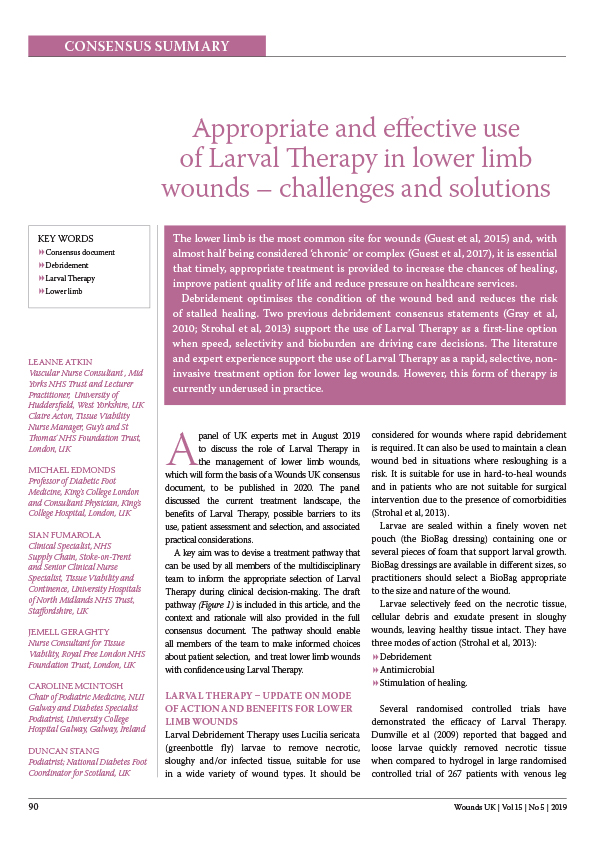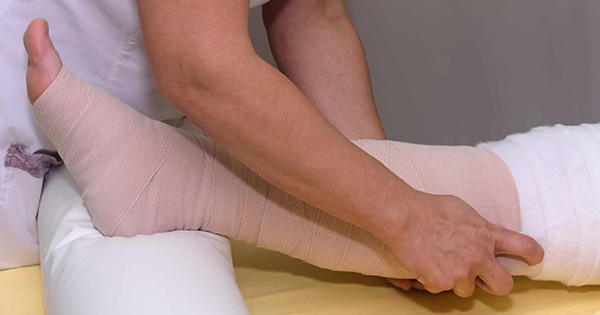The lower limb is the most common site for wounds (Guest et al, 2015) and, with almost half being considered ‘chronic’ or complex (Guest et al, 2017), it is essential that timely, appropriate treatment is provided to increase the chances of healing, improve patient quality of life and reduce pressure on healthcare services. Debridement optimises the condition of the wound bed and reduces the risk of stalled healing. Two previous debridement consensus statements (Gray et al, 2010; Strohal et al, 2013) support the use of Larval Therapy as a first-line option when speed, selectivity and bioburden are driving care decisions. The literature and expert experience support the use of Larval Therapy as a rapid, selective, noninvasive treatment option for lower leg wounds. However, this form of therapy is currently underused in practice.







